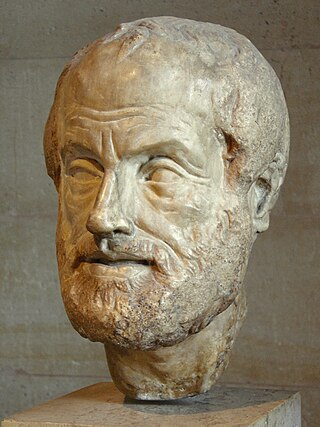In mathematics, a finitary relation over sets X1, ..., Xn is a subset of the Cartesian product X1 × ⋯ × Xn; that is, it is a set of n-tuples (x1, ..., xn) consisting of elements xi in Xi. Typically, the relation describes a possible connection between the elements of an n-tuple. For example, the relation "x is divisible by y and z" consists of the set of 3-tuples such that when substituted to x, y and z, respectively, make the sentence true.
A relational database is a database based on the relational model of data, as proposed by E. F. Codd in 1970. A system used to maintain relational databases is a relational database management system (RDBMS). Many relational database systems are equipped with the option of using SQL for querying and updating the database.
The relational model (RM) is an approach to managing data using a structure and language consistent with first-order predicate logic, first described in 1969 by English computer scientist Edgar F. Codd, where all data is represented in terms of tuples, grouped into relations. A database organized in terms of the relational model is a relational database.
Semiotics is the systematic study of sign processes (semiosis) and meaning making. Semiosis is any activity, conduct, or process that involves signs, where a sign is defined as anything that communicates something, usually called a meaning, to the sign's interpreter. The meaning can be intentional, such as a word uttered with a specific meaning; or unintentional, such as a symptom being a sign of a particular medical condition. Signs can also communicate feelings and may communicate internally or through any of the senses: visual, auditory, tactile, olfactory, or gustatory (taste). Contemporary semiotics is a branch of science that studies meaning-making and various types of knowledge.
In any of several fields of study that treat the use of signs — for example, in linguistics, logic, mathematics, semantics, semiotics, and philosophy of language — the extension of a concept, idea, or sign consists of the things to which it applies, in contrast with its comprehension or intension, which consists very roughly of the ideas, properties, or corresponding signs that are implied or suggested by the concept in question.

An object–relational database (ORD), or object–relational database management system (ORDBMS), is a database management system (DBMS) similar to a relational database, but with an object-oriented database model: objects, classes and inheritance are directly supported in database schemas and in the query language. In addition, just as with pure relational systems, it supports extension of the data model with custom data types and methods.
First normal form (1NF) is a property of a relation in a relational database. A relation is in first normal form if and only if no attribute domain has relations as elements. Or more informally, that no table column can have tables as values. Database normalization is the process of representing a database in terms of relations in standard normal forms, where first normal is a minimal requirement. SQL-92 does not support creating or using table-valued columns, which means that using only the "traditional relational database features" most relational databases will be in first normal form by necessity. Database systems which do not require first normal form are often called NoSQL systems. Newer SQL standards like SQL:1999 have started to allow so called non-atomic types, which include composite types. Even newer versions like SQL:2016 allow JSON.
In logic and philosophy, a property is a characteristic of an object; a red object is said to have the property of redness. The property may be considered a form of object in its own right, able to possess other properties. A property, however, differs from individual objects in that it may be instantiated, and often in more than one object. It differs from the logical/mathematical concept of class by not having any concept of extensionality, and from the philosophical concept of class in that a property is considered to be distinct from the objects which possess it. Understanding how different individual entities can in some sense have some of the same properties is the basis of the problem of universals.
In semiotics, a sign is anything that communicates a meaning that is not the sign itself to the interpreter of the sign. The meaning can be intentional, as when a word is uttered with a specific meaning, or unintentional, as when a symptom is taken as a sign of a particular medical condition. Signs can communicate through any of the senses, visual, auditory, tactile, olfactory, or taste.

Data modeling in software engineering is the process of creating a data model for an information system by applying certain formal techniques.
In computer science, a relational operator is a programming language construct or operator that tests or defines some kind of relation between two entities. These include numerical equality and inequalities.
The object–relational impedance mismatch is a set of conceptual and technical difficulties that are often encountered when a relational database management system (RDBMS) is being served by an application program written in an object-oriented programming language or style, particularly because objects or class definitions, must be mapped to database tables defined by a relational schema.

Representation is the use of signs that stand in for and take the place of something else. It is through representation that people organize the world and reality through the act of naming its elements. Signs are arranged in order to form semantic constructions and express relations.
Relationalism is any theoretical position that gives importance to the relational nature of things. For relationalism, things exist and function only as relational entities. Relationalism may be contrasted with relationism, which tends to emphasize relations per se.
A sign relation is the basic construct in the theory of signs, also known as semiotics, as developed by Charles Sanders Peirce.
The logic of information, or the logical theory of information, considers the information content of logical signs and expressions along the lines initially developed by Charles Sanders Peirce. In this line of work, the concept of information serves to integrate the aspects of signs and expressions that are separately covered, on the one hand, by the concepts of denotation and extension, and on the other hand, by the concepts of connotation and comprehension.
In semiotics, the study of sign processes (semiosis), the meaning of a sign is its place in a sign relation, in other words, the set of roles that the sign occupies within a given sign relation.

John Deely was an American philosopher and semiotician. He was a professor of philosophy at Saint Vincent College and Seminary in Latrobe, Pennsylvania. Prior to this, he held the Rudman Chair of Graduate Philosophy at the Center for Thomistic Studies, located at the University of St. Thomas (Houston).

Charles Sanders Peirce began writing on semiotics, which he also called semeiotics, meaning the philosophical study of signs, in the 1860s, around the time that he devised his system of three categories. During the 20th century, the term "semiotics" was adopted to cover all tendencies of sign researches, including Ferdinand de Saussure's semiology, which began in linguistics as a completely separate tradition.
The following outline is provided as an overview of and topical guide to semiotics:




